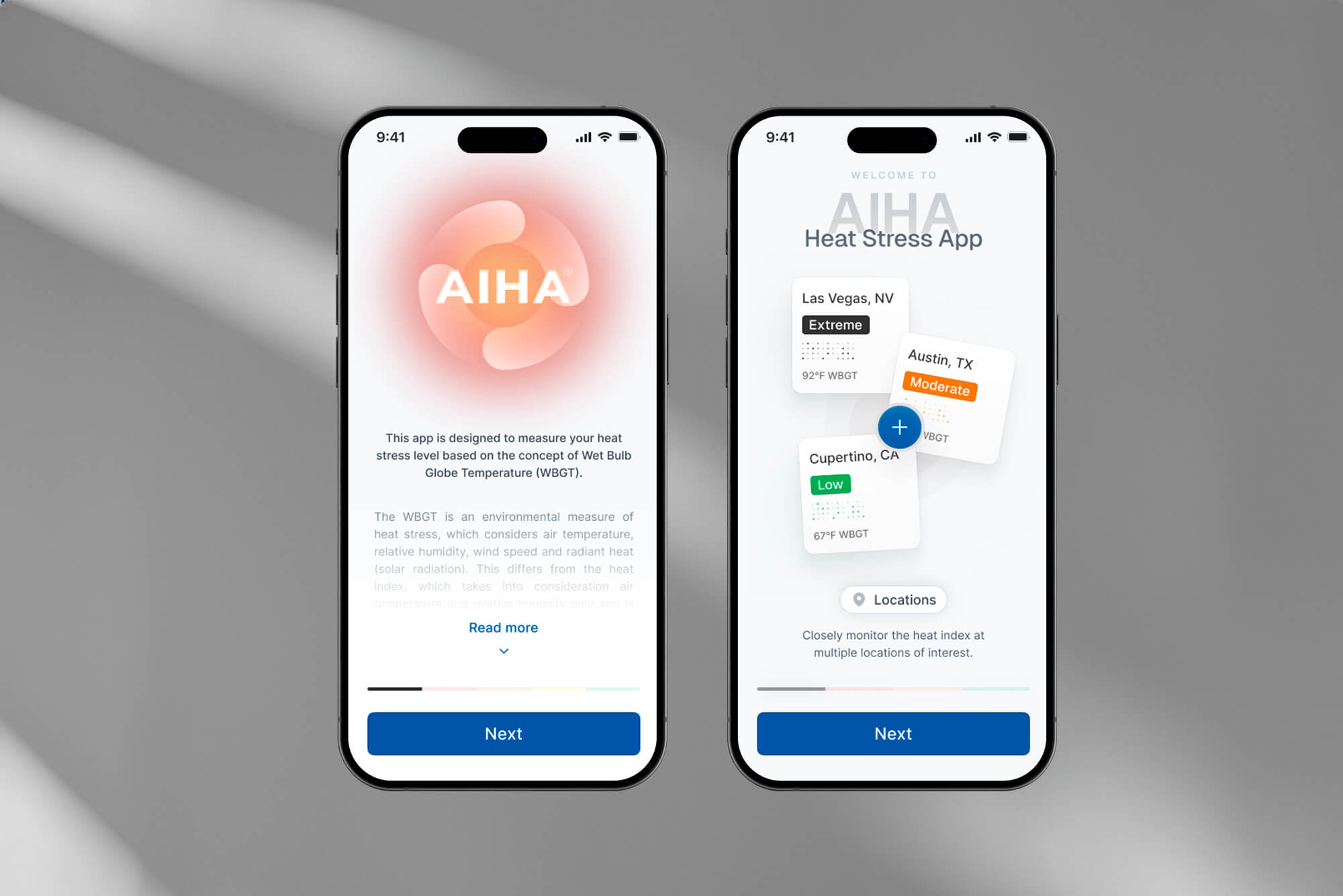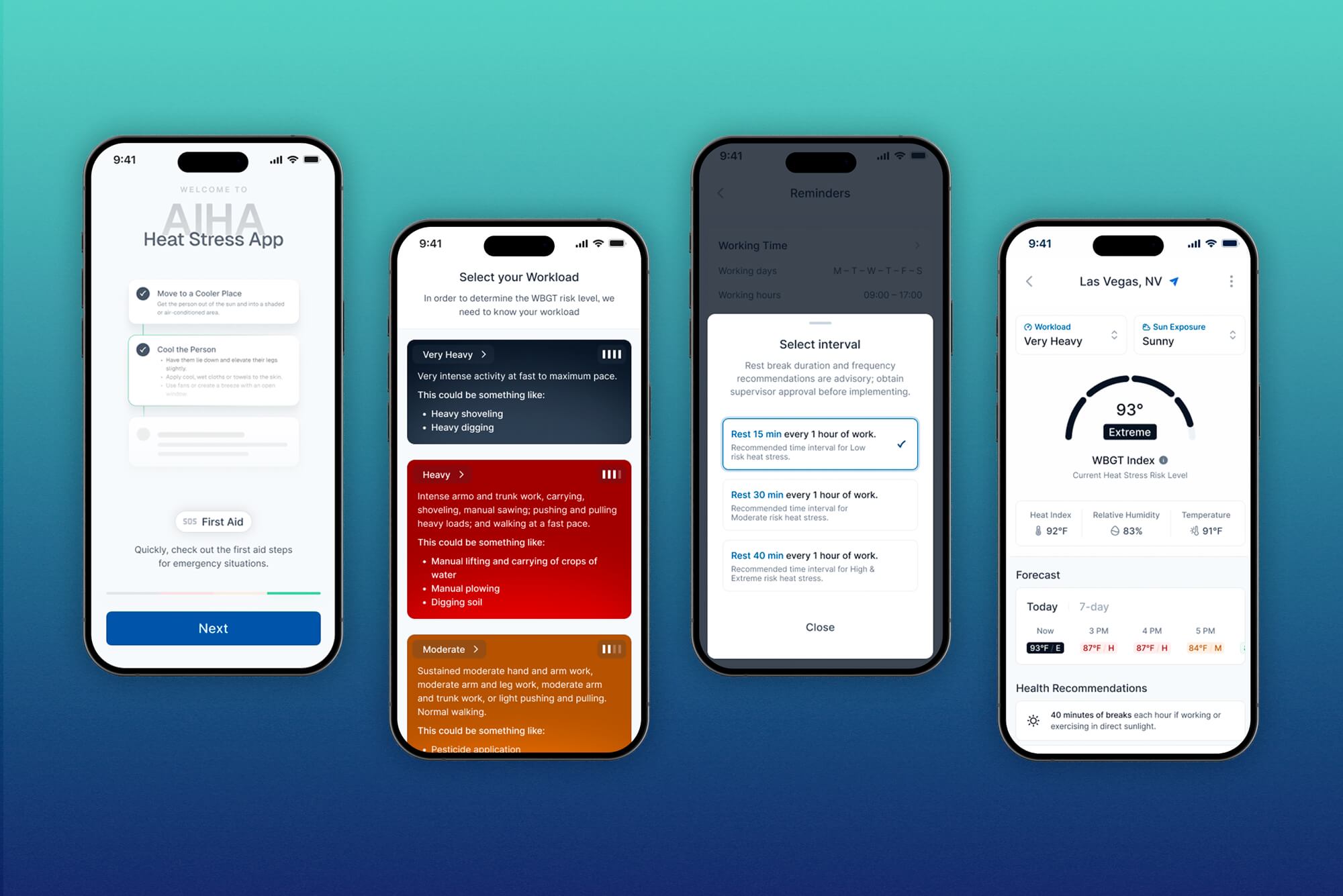Extreme heat creates life-threatening conditions for millions of workers every year.
The International Labor Organization reports that more than 70% of the world’s workforce is exposed to excessive heat at least once every year. The impact of this exposure can be severe: The most recent estimates show that excessive heat kills nearly 19,000 workers every year and inflicts nearly 23 million injuries each year.
The question is, how do you protect workers from the weather?
As it turns out, all it takes is one great idea and a solid development partner to build a solution that will save lives.
The opportunity
It all began when AIHA, the association for scientists and professionals committed to preserving and ensuring occupational and environmental health and safety (OEHS), turned its attention to heat.
“Our climate is evolving, changing, and we decided to form a committee called the Thermal Stress Working Group, to help advance the science and develop products and materials to protect outdoor workers from excessive temperatures,” said Lawrence Sloan, CEO of AIHA.
At the time, an existing application on the market, developed through a collaboration between The National Institute for Occupational Safety and Health (NIOSH) and the Occupational Safety and Health Administration (OSHA), used the heat index to calculate heat burden on workers. In reality, however, the heat index is not the only factor to consider. For example, heat index is measured in the shade. Sun exposure, humidity, and clothing type all contribute to the effects of extreme heat. The AIHA Board and members of the working group wanted to create an application that could address extreme heat holistically and, in the process, provide greater protection to workers at risk of exposure.
At first, AIHA approached NIOSH and OSHA and asked to partner on an upgraded application. Both organizations declined, having removed app building from their current operations. Then came the summer of 2022 – the third warmest on record for the contiguous U.S. – and AIHA decided they didn’t want to wait for a partnership. The association would build its own app. The Thermal Stress Working Group put together an RFP and began the process of finding a development firm.
AIHA received several solid proposals, but the strongest came from within the working group. Jo Anne Balanay, PhD, a professor of environmental and occupational health in the environmental health sciences program at East Carolina University and an AIHA member, had developed an algorithm that used Wet Bulb Globe Temperature (WBGT). WBGT is a technology that measures more than just air temperature to more accurately calculate heat stress risk level.
“Essentially, they had the heart and the soul of the app already developed,” Sloan said.
They also came to the table with a preferred technology vendor: Dualboot Partners.
AIHA approved the funding for the project in the fall of 2023, and work on the app began.

The solution
The project kicked off with design. The Dualboot team met twice a week with the AIHA working group project team to scope out both the product and the vision, documenting all the ideal functionality, as well as the desired look and feel. They analyzed the intended audience, which consists of two distinct groups: workers on the job site and the people who supervise them.
“That was the initial exercise: They told us the problem they were trying to solve. Our job was to make it easy to use, aesthetically pleasing and meet the needs of their end users,” said Michael Boehm, a product director at Dualboot Partners.
Then, it was all about building the application in a robust and scalable way to enable future growth.
The resulting app works like this: A worker is prompted to answer questions about their work intensity level, the type of clothing they’re wearing, and the level of sun exposure in their work environment. The app combines those answers with weather data on tracked locations or specific GPS coordinates and the WetBulb Globe Temperature index to generate the worker’s Heat Stress Risk Level. The app then generates heat stress prevention strategies, including a hydration schedule, rest break schedule, and links to short articles on health and safety. Managers can also view the risk level for their population of workers and make decisions as necessary to protect their teams.
“The ultimate goal is to save lives,” Sloan said. “This is a free product. There are no pop-up ads. There is nothing that will impact the user experience. And we’ve built it to be as universally applicable as we can.”

The impact
In July, the AIHA Heat Stress App went live as part of a beta testing phase. The entire membership of AIHA – about 8,000 professionals – were invited to download and distribute it to their clients. Three dozen more interested parties were invited to test the application, and NIOSH and OSHA distributed the application to their networks, as well.
The goal of this phase is to collect feedback on current functionality, assess what to change in the short-term, and decide what features to incorporate into version 2.0.
“It’s all very exciting,” Sloan said. “And we should get a lot of reach in a short period of time.”
The team has already assembled a list of possible product enhancements. They want to evolve the app to serve both indoor and outdoor workforce populations, for instance. They would like to add underlying medical conditions as a factor. There has even been talk of incorporating wearables. Every new idea is intended to serve the same overarching purpose: to protect workers from the dangers of extreme heat.
“At Dualboot, our strengths are the ability to build quickly and a hard focus on usability,” Boehm said. “We’ve been able to marry that with the technical expertise that AIHA and the working group have brought to the table. We believe that, together, we have made something that those who make a living working outdoors will want to use and that will save lives.”